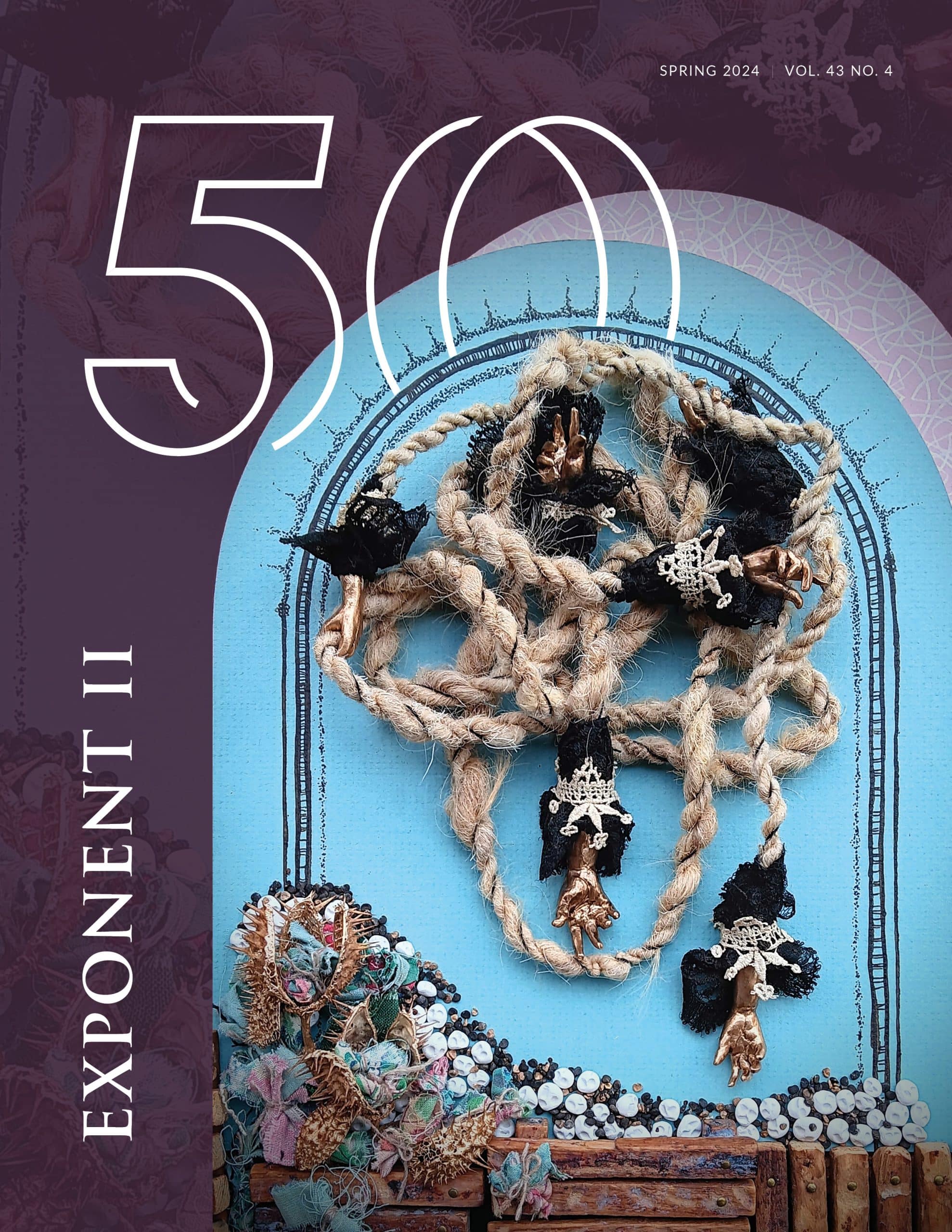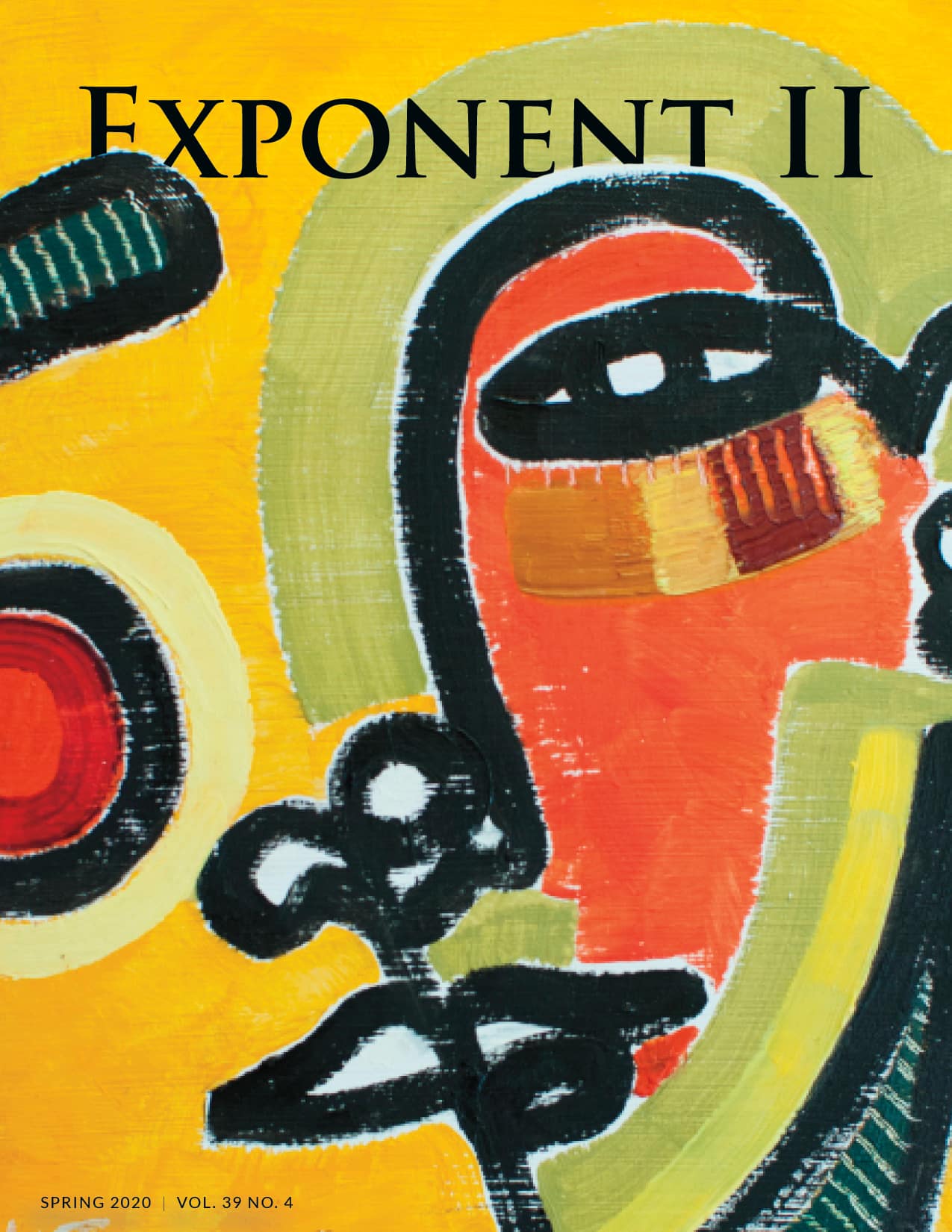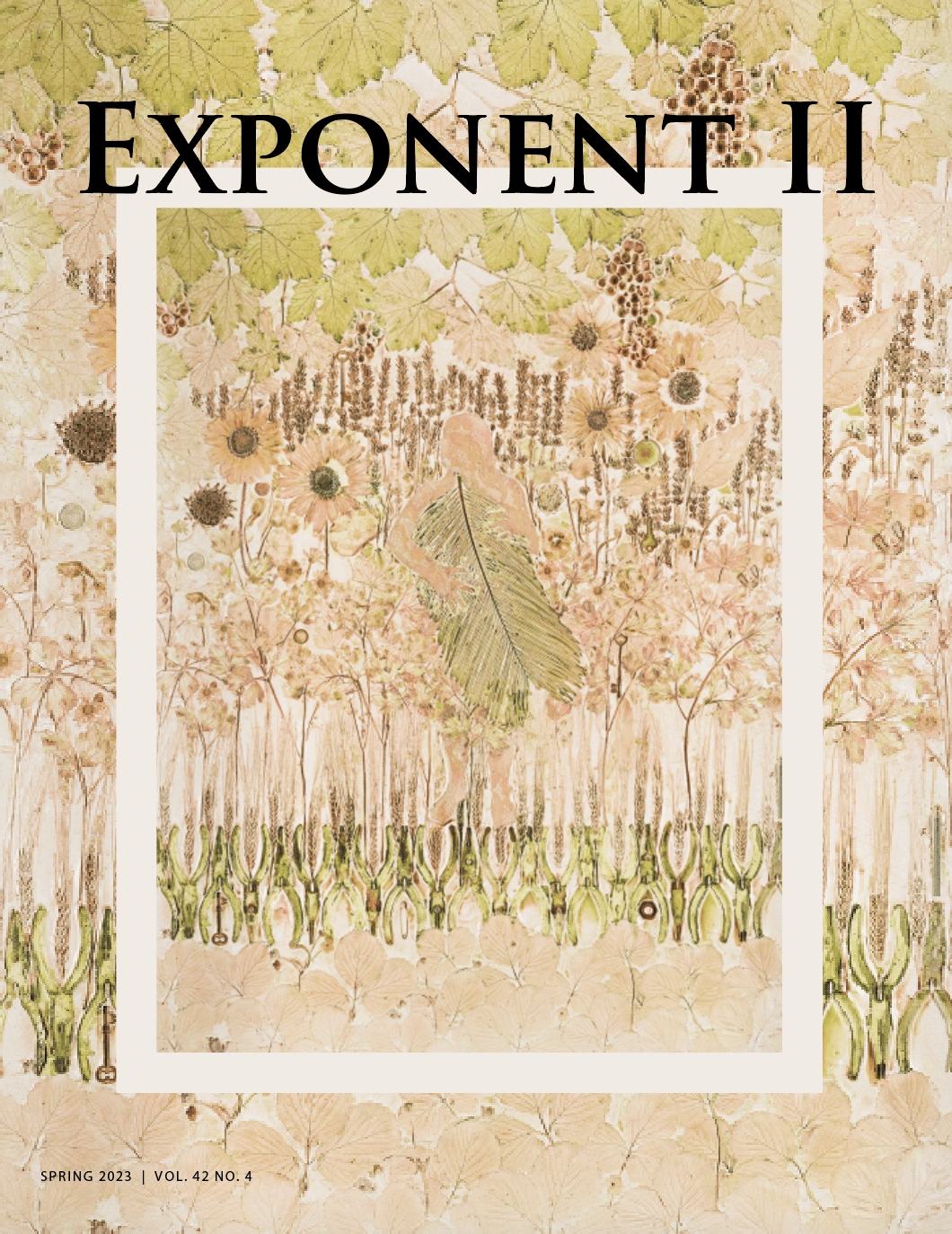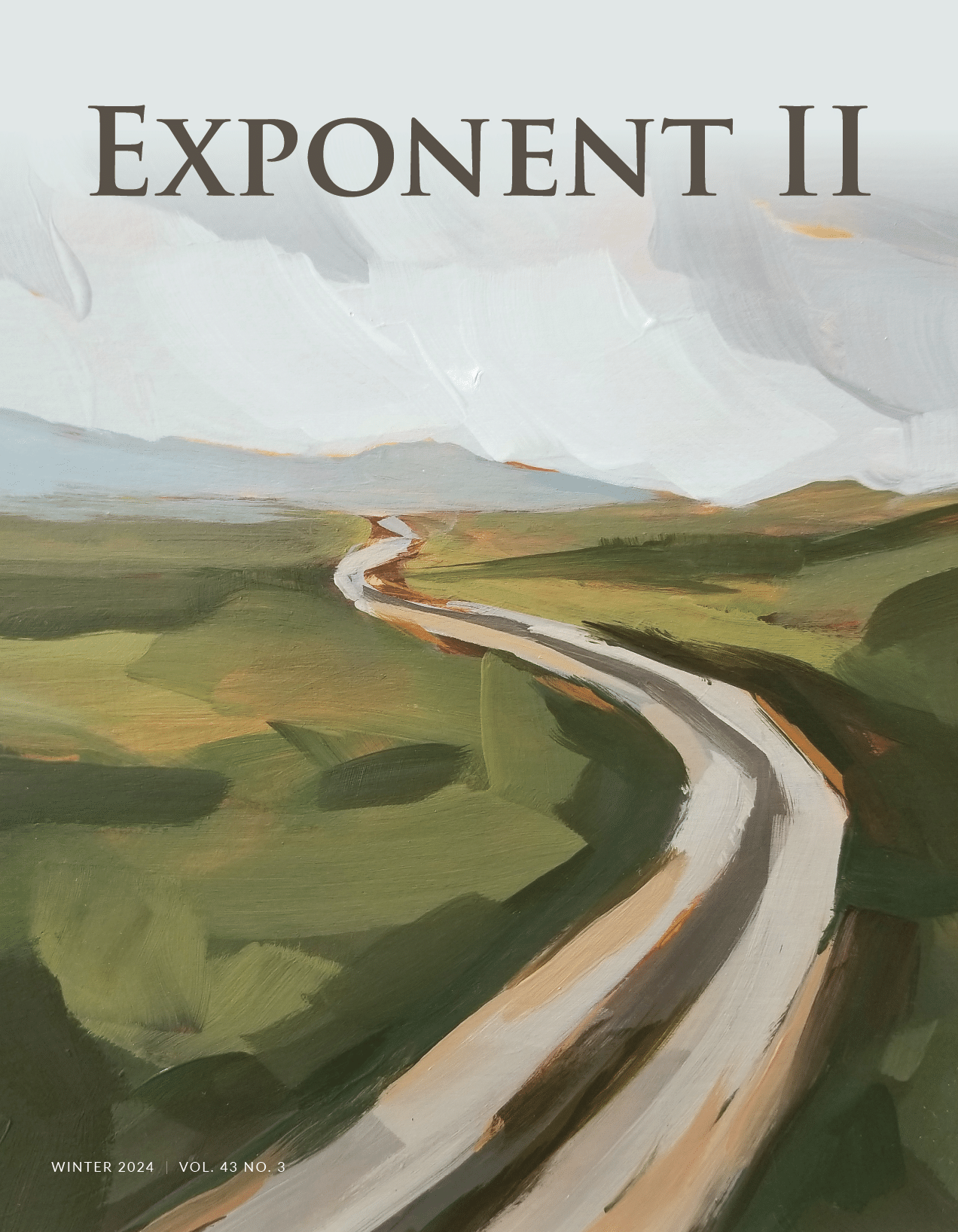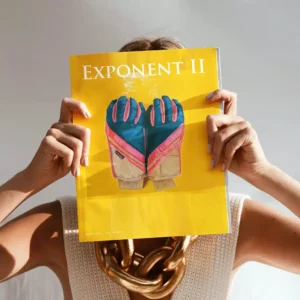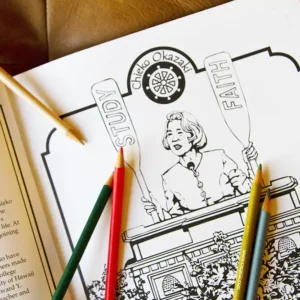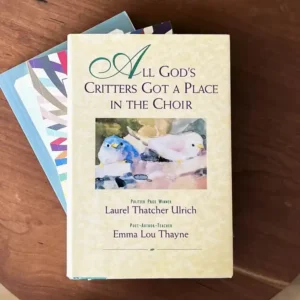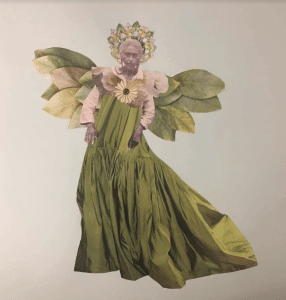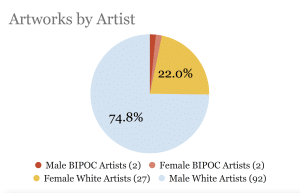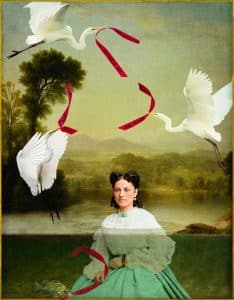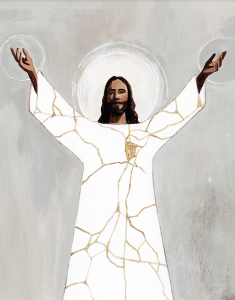“It merely asks us to be brilliant on its behalf.”
This quote is from a dog-eared page in a well-worn copy of Ender’s Game that followed me through elementary, middle, and high school in Provo, Utah, and has come to live on my bedside table in London and in my school bag as I commute to Cambridge for my PhD courses.
I read this quote every morning, alongside the alarm that woke me up for early morning seminary, reminding me that God had something brilliant in mind for me, every single day. But it also reminded me that, for much of my experience growing up as a member of the Church of Jesus Christ of Latter-Day Saints in the most Mormon town in America, I rarely focused on finding happiness in my religious experiences.
While Mormons were having a “moment” in politics and culture at the beginning of the 21st century, our fiction found its way onto bestseller lists and became beloved favorites. From Ender’s Game to Twilight to Mistborn to Fablehaven to Matched, Mormon imaginations became part of a collective literary consciousness. Maybe it’s our unique comfort with the idea of world creation, our investment in the possibility of eternal love, or the easy way in which we discuss the forces of Good and Evil coming into conflict. Maybe it’s all those sacrament meeting talks we write as youth. Whatever the reason, I’m currently studying the Mormon worldview as manifested in Mormon young adult fantasy literature. I spend most of my time explaining to people with very little familiarity with Mormon culture or LDS doctrine what, exactly, it is that makes these Mormon stories so very unique. I’ve come to the conclusion that at least part of our appeal is a unique understanding of children’s brilliance and our complicated relationship with being happy.
I’m currently studying the Mormon worldview as manifested in Mormon young adult fantasy literature.
I recently attended a lecture with Geraldine McCaughrean, a British children’s author, who was talking about writing for children during the climate crisis, Russia’s unconscionable attacks on Ukraine, and the political realities of the inequality that comes from State-sanctioned cruelty. She talked about wanting to balance educating children with, and this is the important part, not wanting to “inscribe Armageddon on children’s skulls.” As the author said this, I was shocked to see academics and writers alike nodding in agreement. It seemed that the consensus among members of my field was that children were not prepared to be soldiers on the front lines of the end of the world.
I, however, grew up Mormon. I grew up with the End Times emblazoned on my skull, heart, mind, and soul. Joanna Brooks describes this phenomenon gorgeously in Book of Mormon Girl, saying that, as a child, “she knew history was swinging our way, the way the prophets have always predicted, toward the great destruction that would bring the opening of the skies and the return of a beautiful Jesus.” In Sunday School classes from as early as I can remember, I was promised that I — with sticky fingers and crayons in hand — had been saved for “these latter days” and that I was of a sacred generation who would prepare the world for the coming of Christ. I was excited. I was ready. I was going to be the hero the world needed, and it would be brilliant.
Maybe this is why, for me, Ender Wiggin has been the perfect travel companion as I have wandered in and out of my faith and our stories. In Ender’s Game, Ender is a gifted seven- to twelve-year-old who is unknowingly given command of global military forces to defeat an invasive alien species called the “buggers.” During his training, Ender is told consistently of his own exceptionalism and reassured that he, and he alone, can prevent the pending apocalypse. He, like me, was prepared and chosen.
Ender is clever and talented. He tends to excel at every task given to him. But he is also, intentionally, isolated from his peers and has a knack for dwelling too long on impossible questions that accompany apocalyptic alien invasions. Although he is brilliant, his story is intensely unhappy.
And every page of Ender’s Game brought me comfort as a queer, nerdy Mormon girl who somehow couldn’t find a way to stop asking impossible questions. Whose assurance of my own importance in God’s plan for these final days was matched equally with the deeply ingrained knowledge that, from the moment I had my first crush on a girl, I wasn’t quite living up to the perfection that would be required of me.
Like Ender, when he starts to empathize with insect-like, alien buggers over all of humankind, I understood that I faced a choice: brilliant or happy.
It seems to be a well-established phenomenon at this point that many queer, young Mormons get really into church doctrine in their early teens while trying to answer some of the questions that come with being queer and Mormon. When I was just a bit older than Ender, I got desperately into scripture study. I played piano in all of my church classes and sought out callings that demanded more time, attention, and service in the hope that working just a bit harder to be a Good Mormon might actually fix some of the contradictions I found within myself. I did Personal Progress. Twice. I went to every Girls Camp and bore dusty, grimy testimony of the righteousness of the cause. And it extended outside of church-specific activities. I felt the need to be perfect in school and in sports and in every context of my life. It felt like the deal I had made with God and my leaders. If I was brilliant enough, brilliant on behalf of the whole entire world, then it would be okay that I couldn’t be happy for myself.
And I saw the signs that were promised. During the height of my devotion, I got what felt like two direct answers from God, callings that spoke to my role in Their plan. The first was the mission age change. I had listened to “Army of Helaman” and pictured myself at the MTC, a place I imagined would be an awful lot like Ender Wiggen’s Battle School. God was hastening Their work, and They needed me sooner!
The second was the launch of Ordain Women, to which I submitted my profile when I was just fifteen. In a stunning moment at the beginning of Ender’s Game, Ender’s Mormon mother, who has kept her faith even as most religions failed, gives her son a blessing. I knew, as much as I knew anything, that as God was preparing this chosen generation for the End Times, They would need all of us to have equal power.
In the decade since, I think I’ve gotten rid of some of my self-importance (although I’m sure many people in my life would insist that there is still plenty there). I didn’t serve a mission, and women still don’t hold the LDS priesthood. I’ve had to rethink my callings and role in my faith many times.
At the conclusion of Ender’s Game, once Ender has saved humanity and begun the colonization of space, he is not allowed to return to Earth. He is too famous and too powerful, and the ruling bodies of Earth fear the influence that a brilliant child might have. Ender himself has also secretly discovered the last living Bugger, a Hive Queen who is sentient and compassionate. He sets off into space to try to find a new place, a new homeland, where the Hive Queen can live and thrive, and where he can finally have peace. But he is exiled and never allowed back into the world he once loved.
I moved to New York City as soon as I finished high school. I’m now living in London, studying the stories that people of my faith tell for and about children. The world ends. A lot. In almost every one of the books. People also find love that lasts for eternities. There is almost always a loving God, or sometimes a loving mother, who comforts the heroes when they doubt. In many of the stories the large, organizing power structure is the root of all evil, the force against which the heroic, rebellious children fight. In some of the stories, that organization is a church.
Since I came out and moved away from the heart of Zion, I return to church only rarely, when I’m incredibly homesick. Coming back to Utah is like slipping into a story that is no longer mine. But I am still a Mormon girl. When I read these books by my people, I recognize the stories we tell ourselves — our scriptures and myths that resonate for us and beyond us. When I read Orson Scott Card or Ally Condie, Brandon Sanderson or Stephanie Meyer, I see the heroes we are trained to be. The beautiful parts, and the broken.
Ender has four books after Ender’s Game. He lives across thousands of years and dozens of planets. He becomes the leader of a new religion. He learns to be a writer and priest rather than a soldier. He falls in love. He saves the Hive Queen and repents for the harm that he did when he was young. He changes the world, many times over.
In the end, he proves that his leaders were wrong.
He is brilliant. And happy. ⋑
Emma Tueller Stone (she/her) studies YA fantasy literature at Cambridge University and writes from London in her spare time. Twitter: @emmatueller, TikTok: @emma2reads





